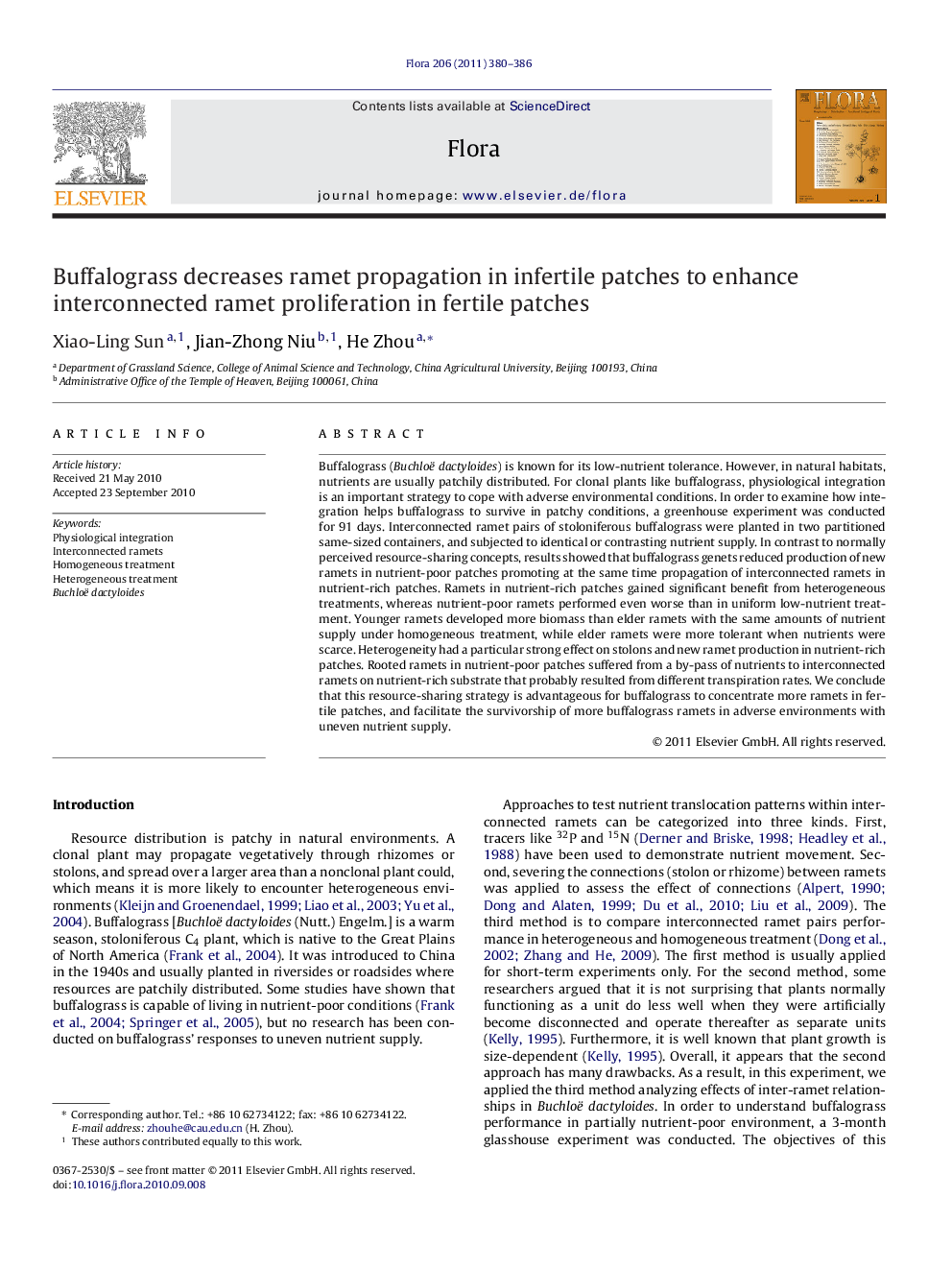| Article ID | Journal | Published Year | Pages | File Type |
|---|---|---|---|---|
| 2180076 | Flora - Morphology, Distribution, Functional Ecology of Plants | 2011 | 7 Pages |
Buffalograss (Buchloë dactyloides) is known for its low-nutrient tolerance. However, in natural habitats, nutrients are usually patchily distributed. For clonal plants like buffalograss, physiological integration is an important strategy to cope with adverse environmental conditions. In order to examine how integration helps buffalograss to survive in patchy conditions, a greenhouse experiment was conducted for 91 days. Interconnected ramet pairs of stoloniferous buffalograss were planted in two partitioned same-sized containers, and subjected to identical or contrasting nutrient supply. In contrast to normally perceived resource-sharing concepts, results showed that buffalograss genets reduced production of new ramets in nutrient-poor patches promoting at the same time propagation of interconnected ramets in nutrient-rich patches. Ramets in nutrient-rich patches gained significant benefit from heterogeneous treatments, whereas nutrient-poor ramets performed even worse than in uniform low-nutrient treatment. Younger ramets developed more biomass than elder ramets with the same amounts of nutrient supply under homogeneous treatment, while elder ramets were more tolerant when nutrients were scarce. Heterogeneity had a particular strong effect on stolons and new ramet production in nutrient-rich patches. Rooted ramets in nutrient-poor patches suffered from a by-pass of nutrients to interconnected ramets on nutrient-rich substrate that probably resulted from different transpiration rates. We conclude that this resource-sharing strategy is advantageous for buffalograss to concentrate more ramets in fertile patches, and facilitate the survivorship of more buffalograss ramets in adverse environments with uneven nutrient supply.
